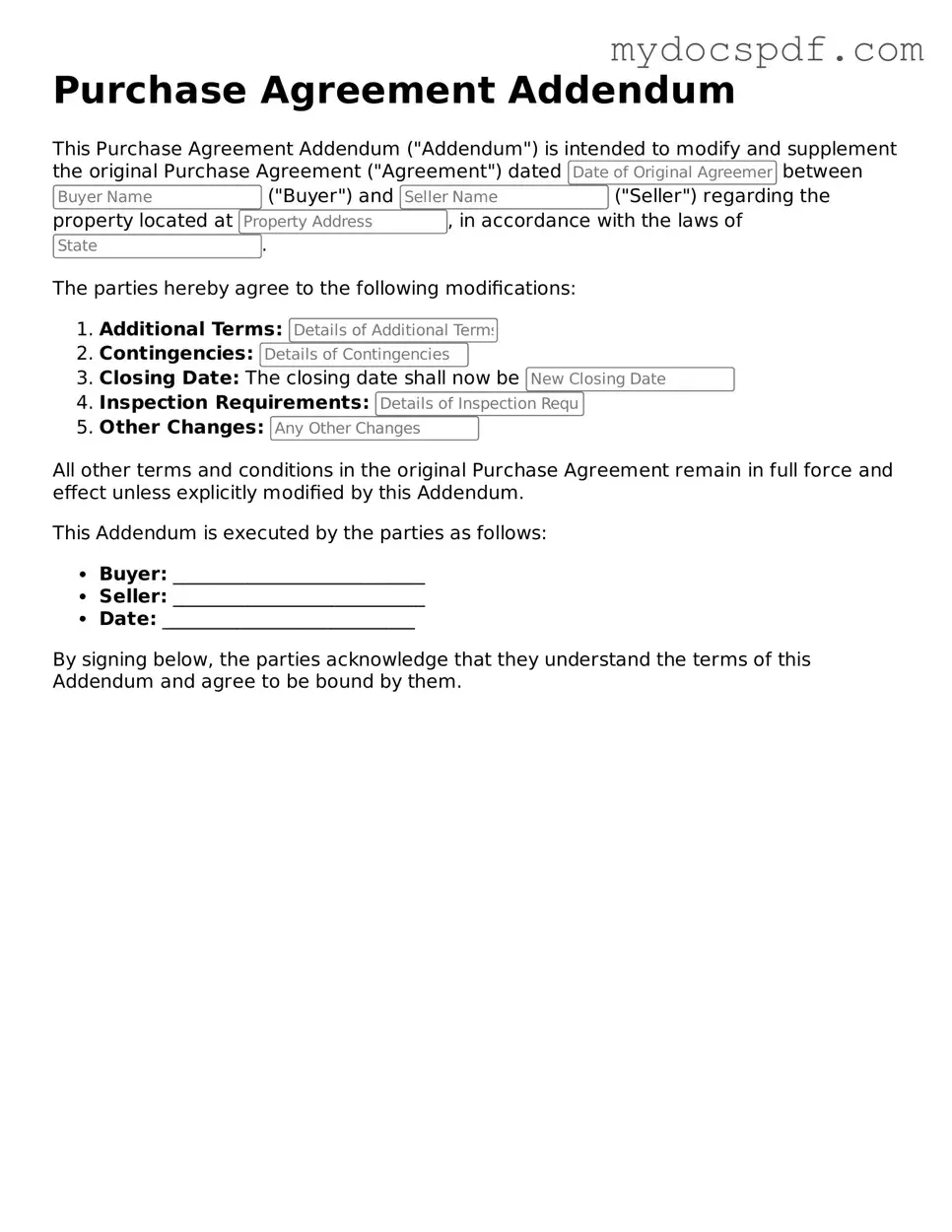Attorney-Approved Purchase Agreement Addendum Template
The Purchase Agreement Addendum is a legal document that modifies or adds to the terms of an existing purchase agreement. This form is essential for clarifying specific conditions or obligations that were not included in the original contract. Understanding its purpose and proper usage is crucial for both buyers and sellers to ensure a smooth transaction process.
Access Editor Here
